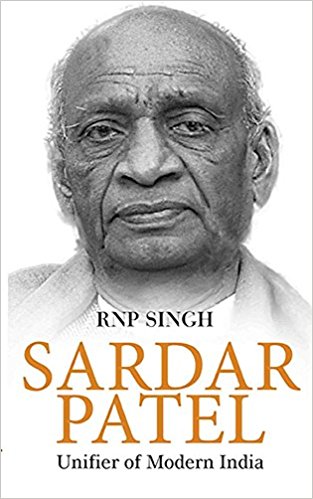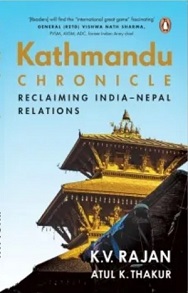RNP Singh has lucidly narrated the heroic saga of integrating the nation by indomitable Sardar Vallabhbai Patel by incorporating the princely territories into it. The account refreshes the memory of struggle to keep together the parts of the dismembered and exploited nation by the colonial power.
The East India Company commenced territorial acquisitions in India with the battle of Plassey in 1757. Queen Victoria assumed direct control of the sub-continent in 1858, after the Indian Mutiny. Emaciated by the World War II, the British were forced to leave the country in 1947 in the wake of the independence movement and the fear instilled by the Indian National Army of Netaji Subhash Chandra Bose. Besides, strong resentment against the British was brewing up among the armed forces. However, the independence was not without the bitter after effects of the ‘Divide and Rule’ policy of the British regime. They left the country communally divided as Hindustan and Pakistan, and further Balkanisation of the country by forming ‘Princestan’ with an assortment of 554 Princely States. These states were scattered all over, spanning the sub-continent, comprised two-fifth of the area, and quarter of the population.
Sardar Vallabhbhai Patel, as Home Minister in the Interim Government of Nehru, headed the States Department, successor of Britain’s Political Department. He had the Herculean task in his hands of salvaging the nation from the post-partition mess. This book presents a gripping account of Sardar’s endeavour to unite the fragmented post-partition India against heavy odds. After the lapse of Paramountcy, neither the princes, nor India or Pakistan, could claim the princely states. The princes could individually or collectively decide if they wanted to stay independent or join either India or Pakistan. The time was beset with great uncertainty.
The Standing Committee of the Chamber of Princes had several meetings. They even sought advice of the British Political Department on some issues. At their Bombay Conference, on 29 January, 1947, the princes resolved that the constitution of each state, its territorial integrity and the succession of its reigning dynasty shall not be interfered with by the Indian Union, nor should the existing boundaries of a state be altered except by its free consent. Nawab of Bhopal, as the Chancellor of the Chamber of Princes who wielded enormous influence, was playing in the hands of Pakistan. Bhopal had started organising the princes into Blocks, assisted by the British Secretary of States. Liaqat Ali, Muslim League, declared that the princes were free to negotiate with India or Pakistan.
Patel, in an address to the princes on 1st March 1947, administered a grim warning to them that the freedom that was coming may leave nothing for the princes. On another occasion, Patel warned that “the state was no property of a single individual. Paramaountcy has lapsed… certainly not by the efforts of the Princes, but by those of the people.” This had a salutary effect on the princes barring some pro-Pakistan elements. The Chamber of Princes was playing Jinnah’s role. Jinnah tried to manipulate states like Bhopal, Jodhpur and Junagarh in favour of Pakistan. A formidable challenge confronted the Sardar. His gracious but firm attitude towards princes had a salutary effect. The Sardar tackled the political jigsaw adroitly by building confidence among the princes. Results followed in quick sequence. Out of 554 states, 216 integrated into provinces, 310 consolidated into six Unions, and five put under the Center as Chief Commissionery. All 554 states were reduced to 14 Unions and States. The state forces were incorporated into the Indian Army. Patel described the rulers as co-architects of new India.
The Sardar faced some issues from vacillating Nehru and the personal agenda of Mountbatten in respect to some pro-Pak states wanting to join Pakistan. He spurned all pressures. The Kashmir issue lingered on, as it was not under the States Department headed by Patel. Nehru had taken it away under his direct charge to the great annoyance of Patel. Nehru messed it up by referring it to the UNO under the advice of Mountbatten. Even Gandhi was opposed to the move, as it was bound to get ‘Monkey Justice’. Nehru was to regret it later. Nehru had to regret several other omissions for not heeding the warnings of visionary Patel on China and Tibet. The book contains the letter Patel wrote to Nehru a month before his death, forewarning him about Chinese perfidy. Patel ignored the advice of Mountbatten in case of Junagarh and Hyderabad, England’s ‘faithful ally’, even though Nehru wavered for fear of ‘other consequences’. Nehru preferred soft options.
The account contains fascinating details of region wise progressive integration of states. The United States of Kathiawad, comprising 222 states divided into 860 divisions, was formed on February 15, 1948. Junagarh announced that it had acceded to Pakistan. Its Dewan was Shahnawaz Bhutto, father of PM Bhutto who was to trouble India later. Indian troops moved in the afternoon of 8th November 1947. State’s soldiers were disarmed. Bhutto had left the previous evening. Liaquat Ali didn’t accept the accession of Junagarh. Mountbatten was for recognising it as territory of Pakistan and take the case to the UNO. Mountbatten was kept in dark about the movement of troops. Plebiscite was held on 20th February 1948 as promised by Patel that went overwhelmingly in favour of India. Jamnagar, entertaining pro-Pakistan views, was also suitably handled.
Jinnah had designs in Rajasthan through Jodhpur and Jaisalmer. When Alwar threatened to stay away, Patel placed the Raja and PM Khare under house arrest against Mountbatten’s advice. He killed any design Bharatpur and Alawar were hatching among the Jats. Jinnah had given a signed blank sheet to Jodhpur to write his terms. There was a plan to have a trade agent in Pakistan.
Jodhpur was advised by the ADC to consult his mother, to squelch his move. Mountbatten viewed these as foreign territories where India had no right to act. Jinnah said that on lapse of Paramountcy, the states were free to join Pakistan or India’s Constituent Assemblies. Conduct of Udaipur was admirable. Bikaner and Patiala also assured Patel of their help.
On August 27, 1947 Nizam declared Hyderabad as independent sovereign state, and set up a public relations office in Karachi. Patel plainly told Mountbatten that Nizam had no option but to accede to the dominion of India. Nehru advised to leave the matter to Mountbatten. Patel agreed reluctantly but kept the reigns in his hands. Unlike Kashmir, Hyderabad was under States Department. Patel, due to his illness, made V P Menon, his confidant, a co-negotiator with Hyderabad. Nizam banked on Nehru. Mountbatten regretted that he could not do anything for ‘Britain’s faithful ally’. He left India on 21st June 1948. Razakars were playing havoc with people’s lives. Patel went ahead with Operation Polo under Major General Chaudhury to liberate Hyderabad despite Nehru’s compunctions.
The book contains chronological as well as geographical details of shaping of the new political map of India by the valiant Sardar, the chief architect of the new nation. Reluctant princes and even the aggressive ones came to negotiate for their Privy Purses rather than for their thrones. These were guaranteed under the Constitution, later abrogated by Indira Gandhi as part of her populist programme. The account has fascinating details of regional groupings of the princely states like the merger of 41 states of Orissa and Chhatisgarh as Eastern Union States, formation of Greater Rajasthan and several such groupings.
The book, written with diligent research, deserves to be widely read. The account restores the position of Sardar Patel as the chief architect of the post-colonial India. There had been a silent conspiracy to undermine his role in building the Indian nation. Only Gandhi and Nehru were projected as saviours of the Indian nation. Patel was consciously ignored in life and death, by the powers that mattered. This book endeavours to put the achievement of the loh purush in right perspective. What the Sardar achieved was epochal; he was a Yuga Purush. Gandhi’s professed spiritualism and Nehru’s fancied idealism should have been lusterless had the Sardar not integrated the 554 princedoms into the national whole. The book deserves wide appreciation for recounting nation building by the Sardar, the greatest patriot in the annals of Indian history.










Post new comment